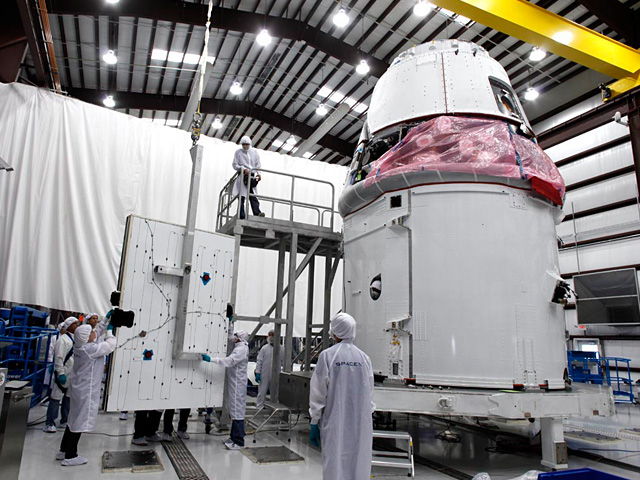New Delay for 1st Private Spaceship Launch to Space Station

The first private spaceship launch to the International Space Station has been delayed, possibly by at least a week, the vehicle's makers announced today (April 23).
The commercial spaceflight company SpaceX was set to launch its Dragon capsule atop a Falcon 9 rocket April 30 from Cape Canaveral Air Force Station in Florida. The unmanned spacecraft will fly a demonstration mission for future cargo deliveries to the space station under an agreement with NASA.
Now, that liftoff will likely not occur until May 3 at the earliest, and most likely around May 7.
"Am pushing launch back approx a week to do more testing on Dragon docking code," SpaceX founder and CEO Elon Musk wrote today on Twitter. "New date pending coordination with @NASA."
The Hawthorne, Calif.-based SpaceX, short for Space Exploration Technologies Corp., has been working to finish final testing and checkouts of its flight system, which will be the first privately built vehicle to rendezvous and dock with the orbiting laboratory.
"After reviewing our recent progress, it was clear that we needed more time to finish hardware-in-the-loop testing and properly review and follow up on all data," SpaceX spokeswoman Kirstin Brost Grantham wrote in an email. "While it is still possible that we could launch on May 3rd, it would be wise to add a few more days of margin in case things take longer than expected. As a result, our launch is likely to be pushed back by one week, pending coordination with NASA."
SpaceX is developing Dragon and Falcon 9 to carry cargo under NASA's Commercial Orbital Transportation Services (COTS) program, which aims to use commercial space taxis to replace the supply delivery services of the retired space shuttles.
Get the Space.com Newsletter
Breaking space news, the latest updates on rocket launches, skywatching events and more!
While Dragon's initial flights will be robotically controlled, eventually SpaceX plans to fly people aboard the capsule. Ultimately, NASA hopes to use this and other private American vehicles to transport its astronauts to the station, instead of relying on Russian vehicles to do the job, as it is now.
You can follow SPACE.com assistant managing editor Clara Moskowitz on Twitter @ClaraMoskowitz. Follow SPACE.com for the latest in space science and exploration news on Twitter @Spacedotcom and on Facebook.
Join our Space Forums to keep talking space on the latest missions, night sky and more! And if you have a news tip, correction or comment, let us know at: community@space.com.

Clara Moskowitz is a science and space writer who joined the Space.com team in 2008 and served as Assistant Managing Editor from 2011 to 2013. Clara has a bachelor's degree in astronomy and physics from Wesleyan University, and a graduate certificate in science writing from the University of California, Santa Cruz. She covers everything from astronomy to human spaceflight and once aced a NASTAR suborbital spaceflight training program for space missions. Clara is currently Associate Editor of Scientific American. To see her latest project is, follow Clara on Twitter.